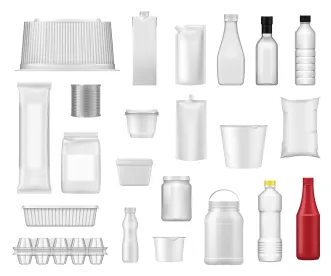Today, the Food and Drug Administration (FDA) opened a docket seeking information regarding PFAS in food packaging. The FDA PFAS action was taken in order to evaluate possible health risks to humans from food packaging, which could ultimately lead to additional regulations. The latest federal action regarding PFAS comes on the heels of heightened PFAS scrutiny by the EPA in 2022. Companies involved in the food packaging industry must take steps now to prepare not only for the FDA’s likely inquiries into product specifics, but also plan for future regulatory and litigation that may result from the FDA’s research.
FDA PFAS Action
Just days after the FDA released its findings regarding PFAS content in seafood in the United States, and associated statements by the FDA regarding health concerns from PFAS in seafood, the FDA today began its evaluation of PFAS content in food packaging and an investigation into the impacts on human health. The FDA action was prompted, in part, by recent EPA studies that determined that PFAS are capable of migrating from containers to a consumer product – in the instance of the EPA studies, such migration was noted in the containers of mosquito repellant. As such, the FDA’s docket seeks to obtain information to identify how PFAS are currently used in food containers, how the food containers are manufactured, whether PFAS can migrate from the food container to the food itself, and the potential impacts of human consumption of PFAS from food sources. The information obtained may ultimately cause the FDA to update dietary exposure estimates and establish regulations that impact the food packaging industry.
In its docket, the FDA outlines eleven specific areas of inquiry related to the above research goals that it intends to pursue.
Implications To Businesses
It is of the utmost importance for businesses along the whole supply chain to evaluate their PFAS risk. Public health and environmental groups urge legislators to regulate these compounds. One major point of contention among members of various industries is whether to regulate PFAS as a class or as individual compounds. While each PFAS compound has a unique chemical makeup and impacts the environment and the human body in different ways, some groups argue PFAS should be regulated together as a class because they interact with each other in the body, thereby resulting in a collective impact. Other groups argue that the individual compounds are too diverse and that regulating them as a class would be over restrictive for some chemicals and not restrictive enough for others.
Companies should remain informed so they do not get caught off guard. Regulators at both the state and federal level are setting drinking water standards and notice requirements of varying stringency, and states are increasingly passing PFAS product bills that differ in scope. For any manufacturers, especially those who sell goods interstate, it is important to understand how those various standards will impact them, whether PFAS is regulated as individual compounds or as a class. Conducting regular self-audits for possible exposure to PFAS risk and potential regulatory violations can result in long term savings for companies and should be commonplace in their own risk assessment.




 />i
/>i

